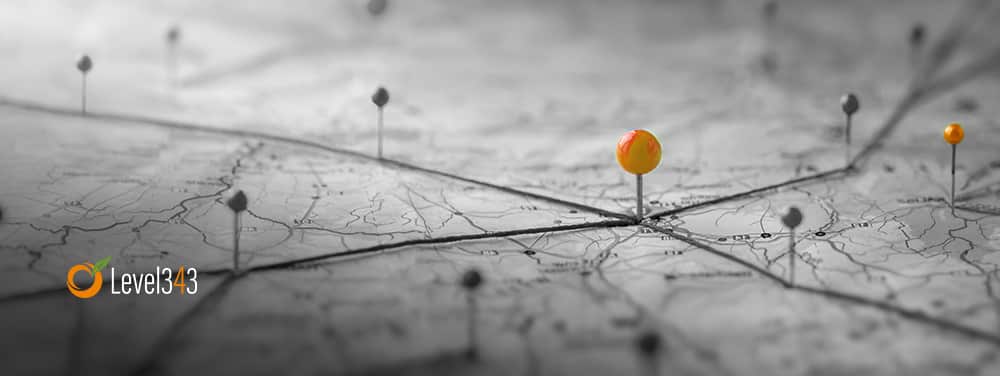Do you know how to properly map out your customer journey? In short, the customer journey is the steps your customer takes to go from a potential customer to an actual buyer. -And, while you may think you know how they get from A to B, mapping it out makes it much easier to optimize those pathways. On the other hand, you may find out that stops they take aren’t the stops you think they take.
Mapping your customer journey is a good idea if you want to definitive answers to questions like:
- where is my audience coming from?
- where do they interact with my business?
- how do they interact with my business?
- where do they convert?
- how can I optimize my touch points for better conversion rates?
- how do I keep them interested?
-And who doesn’t want answers to those kinds of questions?
What is a Customer Journey Map?
Within your business, whether off or online, there are multiple goals and actions. A person might sign up for a newsletter, follow you on social media, call for a consultation, or any number of other actions. Each one has a goal, but how do you get the person to reach those goals?
This is where the customer journey map is very helpful. With a customer journey map, you’ll have a better understanding of the path your prospects take on the way to becoming buyers.
What is Customer Journey Mapping?
Customer journey mapping is the process of taking your consumers’ steps and turning them into a visual representation. You want to see how the customer gets from point A to point B to point C, outlining key events, why they might take each step, and where they get stuck.
As you dive in, you’ll start to notice how some steps might not be so clear. Some callouts look more like suggestions. Users might get confused, shown by pathways like About > Services > About.
The Straight Line to Conversion is Fully Fiction
When you first think of your prospects converting to customers, most of you probably picture a straight line. “They came to my home page, looked at my services, selected the service and contacted me.”
It’s hardly ever that crystal clear and linear. In fact, most customer journeys are convoluted, involving multiple touchpoints, both on and off site. In today’s fully digital, yet oddly traditional, world, someone might see an ad on YouTube for your product, look your website up on their computer, look your address up on their phone, and buy from your brick and mortar store.
With all those many touchpoints, how can one keep track? You guessed it. With a customer journey map.
Building Your Mapping Tools
Do you know what a prospect looks like? What about a lead? How would they find you at the top, middle, and bottom of the funnel? Do you know?
1. Create Your Goal Statement
Decide why you’re creating a customer journey map. What are you trying to achieve, and in which area? Here are four reasons to start mapping your customer journey:
- Better personalization – Understanding the customer journey allows you to improve on it. Study after study shows that customers want a personalized experience, and businesses are responding in droves. You need to be one of them; journey mapping will help you do it right.
- Finding inconsistencies – You can’t guess how your customers came to be; you need to know. Rather than assuming that they’re doing what you expect them to do in order to get from A to Z, use journey mapping to know for sure.
- Achieving goals – How are they signing up for that newsletter? Which referring site brings the most conversions? You need to know. Mapping the customer journey can be used at the macro or micro level, for big goal such as buying to smaller goals such as developing an awareness strategy.
- Finding pain points – Prospects already have a problem they need solving, which is why they’re looking at you. Your job is to make sure that the path from Awareness to Action is seamless. Mapping helps you fine tune each step along the way to do just that.
2. Create Your Profiles
It’s been awhile, but we’ve written about buyer personas before. Buyer personas help you to segment your target market, so you can develop better, more personalized marketing campaigns.
- Are You Making this Big Mistake in Buyer Persona Marketing?
- Developing a Rich Buyer Persona Portfolio
- Building Marketing Campaigns with Buyer Personas
3. Highlight Their Touchpoints
Out of the buyer personas you created, decide which one you want to target with your first customer journey map. I say “which one”, because different people take different paths to get here.
Now, a touchpoint is any place that your customers and prospects can interact with your business. This could be your social media channels, contact forms, CTAs, email marketing, white paper downloads… if there’s a place online that has your signature, or if there’s an action they can do, these are touchpoints.
Narrow the list to include just those your current target customer should be using, versus the ones they are usuing.
4. What Are They Feeling?
Why would they be at that specific touchpoint, and what would motivate them to click through? What are you doing to motivate them to perform the final act of contacting you, or filling out the newsletter subscription, or whatever it is that you chose as a goal?
5. What Are Their Obstacles?
Obviously, some of them aren’t doing what you want them to do, or you wouldn’t be here trying to figure out how to fix it. Somewhere, there’s an obstacle that is directly in the way of your customer making the sale. What is it?
For some, it’s cost. For others, it’s not quite trusting you to do what you say you’ll do. Data can help you see where you have abandonment issues. When you find out where the abandonment happens, you can optimize that particular touchpoint for better results and user experience.
6. Make Changes – But Not All At Once
Now that you know what’s getting in the way of your customers, you can update your site. However, take that with a bit of caution. Never make a bunch of updates all at once, unless you’re doing a full remake of the site. As you make changes, start with A/B testing to see which version performs better.
Just because you’ve done the research and customer mapping doesn’t mean you’re 100% correct. “Better safe than sorry,” should be your thought process. It’s prudent to take your time and make sure each step is done correctly.
Conclusion
Customer journey maps should be ongoing – kind of a constant work in progress. Review your map on a set schedule to make sure you can quickly identify any gaps or issues and fill them in as they happen.




































2 Responses
I love your blog. It is very informative.
Thank you Trisha, we try to keep our readers informed.